Two new developments in Toronto’s east-end are using architectural excellence to create great communities and embracing affordable housing as a value-added proposition.
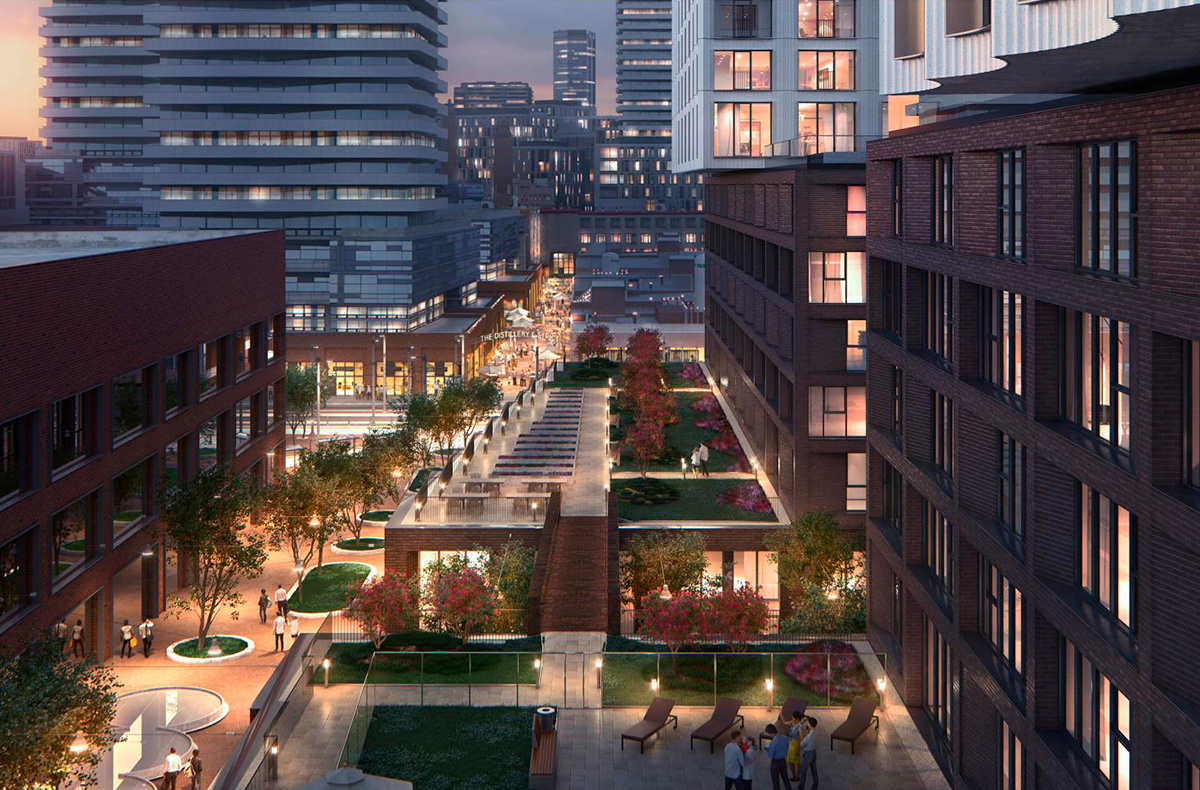
Block 8 West Don Lands will add 756 units to Toronto’s rental market, including 30% priced below market rate. © City of Toronto
When Moshe Safdie built Habitat in Montreal for Expo 67, he intended his stack of cubes to show the world how radical thinking could solve the age-old problem of building affordable housing that is also desirable. But as it turned out, Habitat’s instant success was also its failure. Its novel typology was so well received it quickly became a status symbol address for affluent modernists instead.
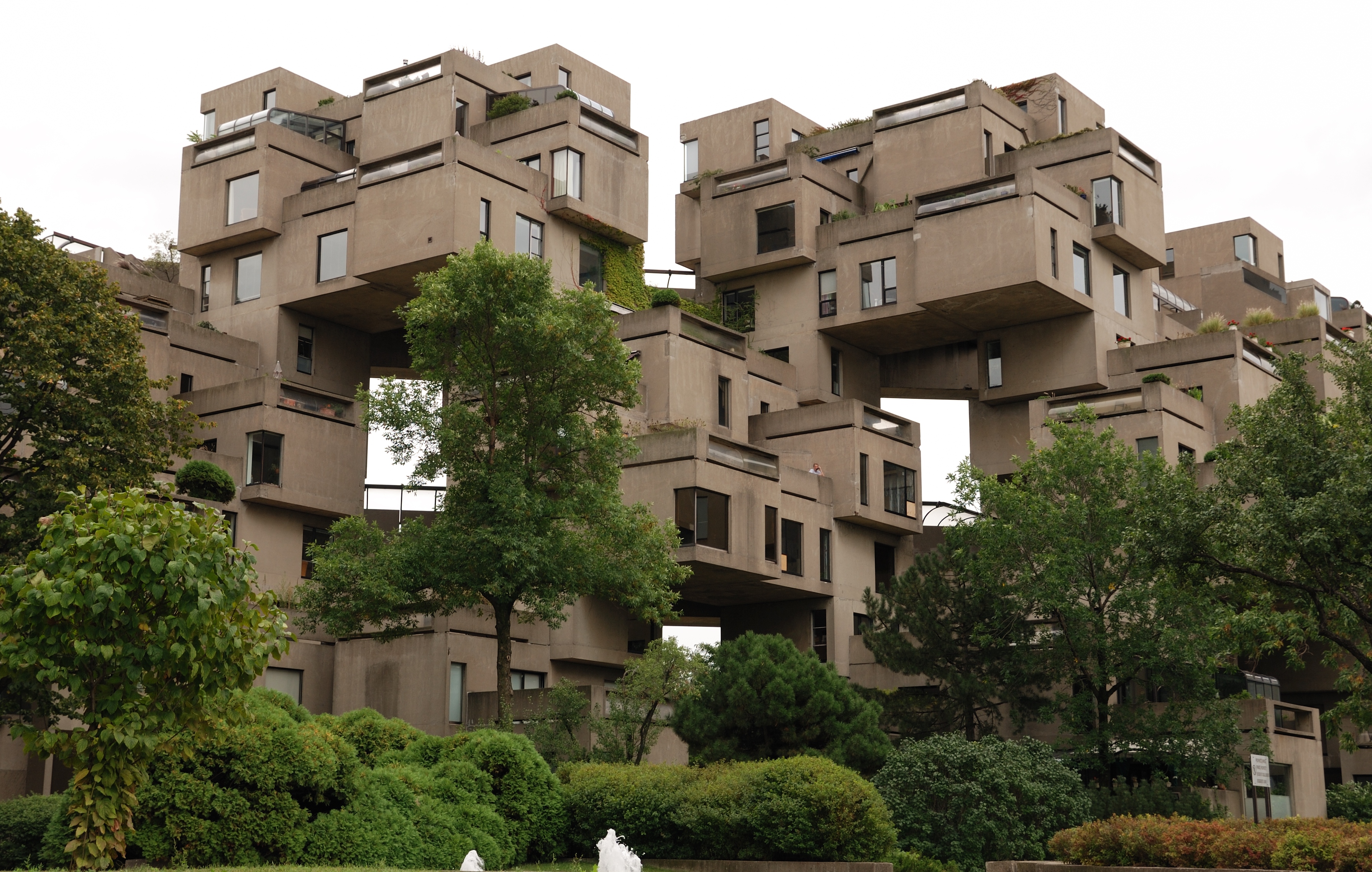
Habitat 67 was originally intended to be a model for affordable housing. © By Taxiarchos
The intention to build remarkable architecture available to everyone remains a challenge. Despite a decades-long condo boom, most urban centres are plagued with affordable housing shortages. Condos have been good for investors but not for people, especially lower-wage earners and young professionals unable to break into an inflated housing market.
In Toronto, various initiatives have begun to address the crisis. For example, in 2020, city planner Gregg Lintern proposed that all condominiums slated for construction within hot market areas dedicate at least 10 percent of the units to below-market-rate rentals.
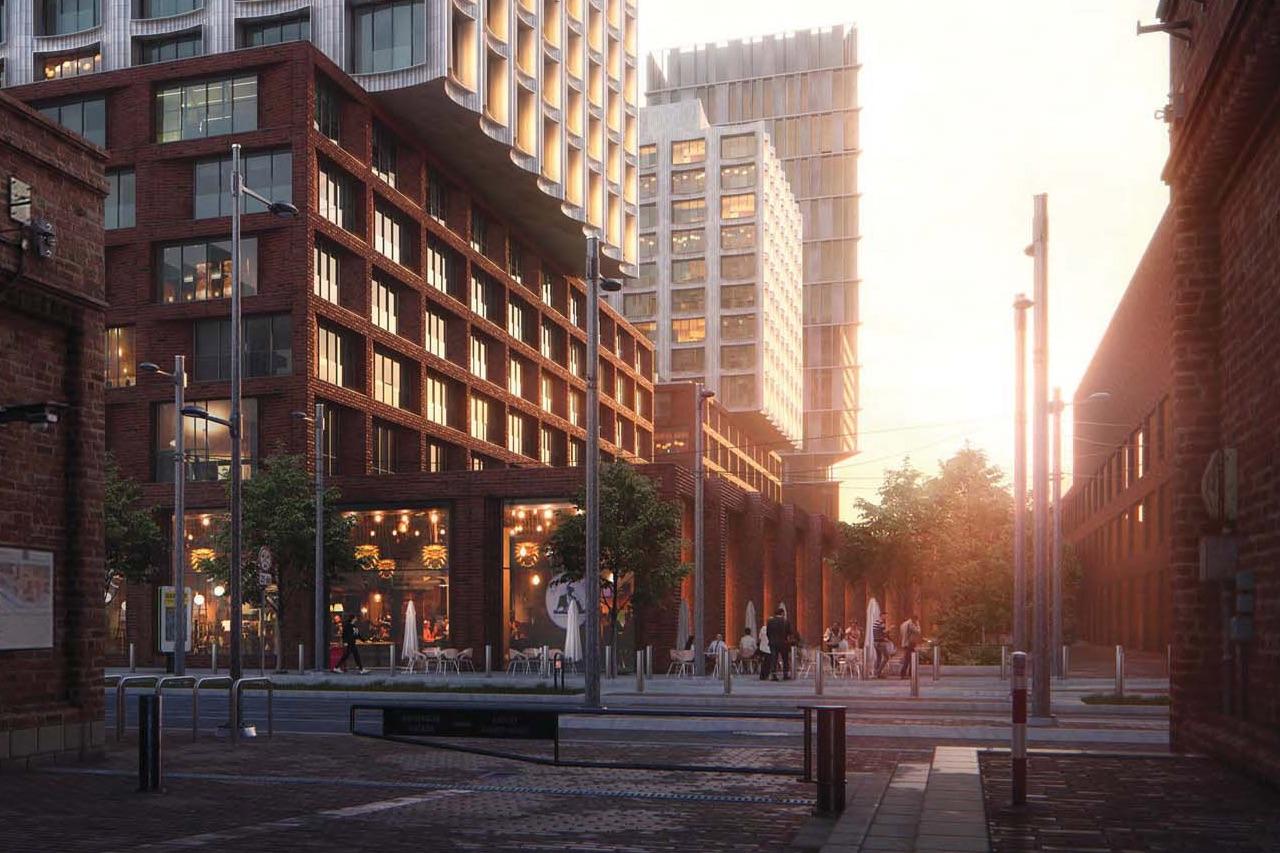
Street view of Block 8 West Don Lands, designed by COBE and architects-Alliance. © City of Toronto
It’s a good start, and, in some instances, developers have already gone beyond that percentage. One of those projects is Block 8 West Don Lands, a cluster of three brick-clad buildings and various amenities now under construction near the Distillery, where heritage warehouses have made the east-side district attractive for tourists and residents alike. The new buildings, two designed by Danish firm COBE, will contain 760 rental units, 30 percent of which will be affordable.
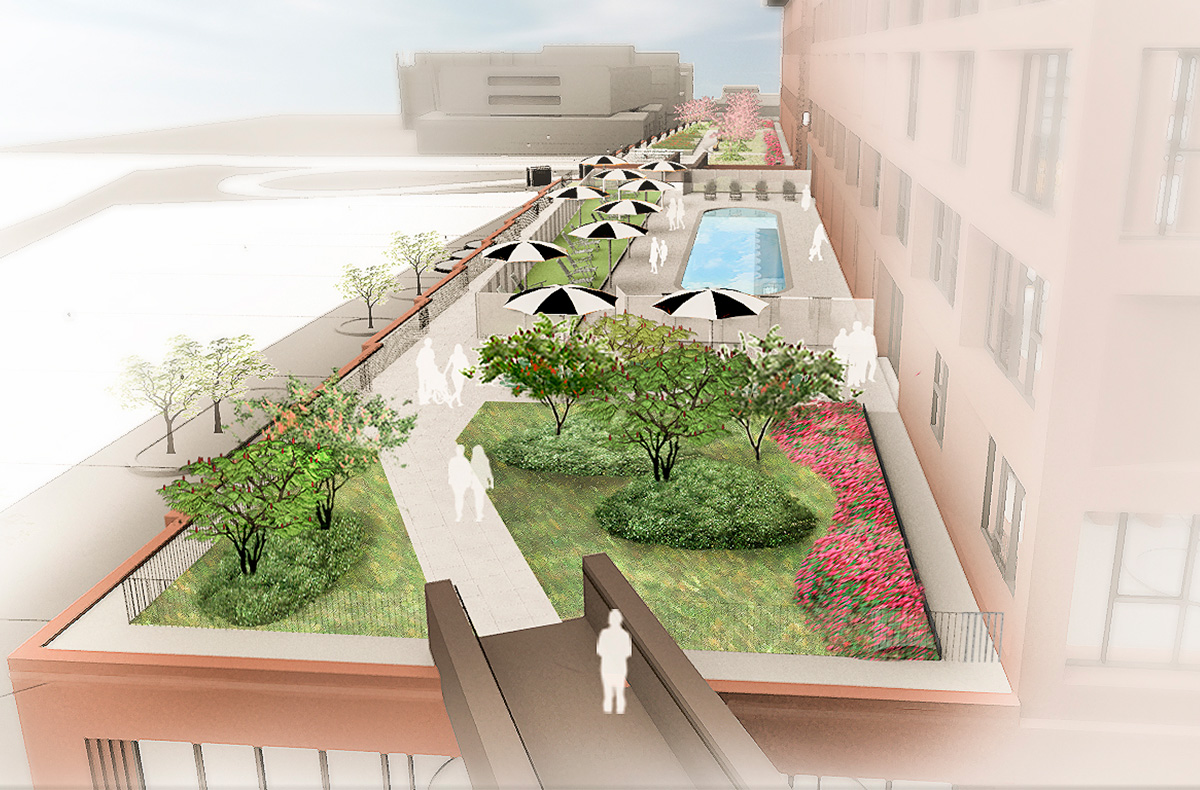
Block 8 amenities include rooftop gardens and an outdoor pool. © Claude Cormier + Associés
The development is not your usual subsidized housing project, which is synonymous with inexpensive and poor design. Instead, it is an elegant mixed-use complex of three interconnected buildings facing onto various public plazas and townhouses with front yards that open onto streets paved in herringbone brick. The surroundings, designed by landscape architect Claude Cormier, will be an attraction in itself, animated with cafes, shops and gardens.
There will be nothing to distinguish the subsidized units from the rest of the project, says Dan Stubbergaard, architect and founder of COBE. “We want to create attractive homes that appeal to many different types of people.”
Stubbergaard is right. For affordable housing to succeed, it requires more than simply providing decent spaces for living. It has to include well-thought-out urban planning that will make communities thrive and grow. Seamlessly integrating mixed-income levels is a significant step forward to achieving that.
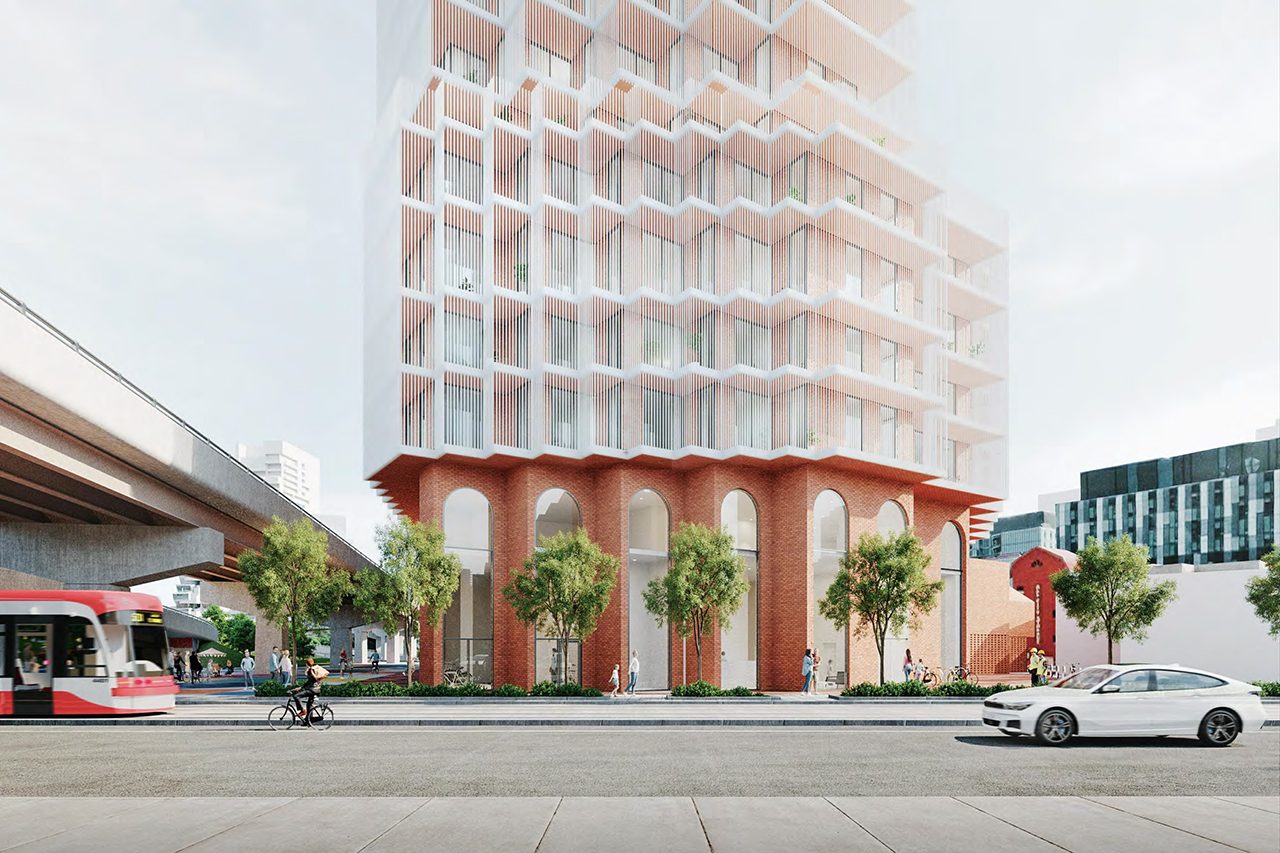
One Sumach by gh3* offers an elegant solution for an awkward site surrounded by expressway ramps. © City of Toronto
Thinking about affordability beyond price-point is precisely what Markee Developments also wants to do. The newly formed company, co-founded by former city planner Jennifer Keesmaat, aims to accomplish what Moshe Safdie envisioned for Habitat 67 of bringing affordability and good design together.
Recently, the company submitted to the city a proposal for a mixed-use project called One Sumach—an elegant 35-storey tower that promises to make 119 of its proposed 324 rental suites affordable, or about one out of every three units. Designed by leading Toronto firm gh3*, it features an eye-catching public plaza surrounded by Romanesque archways built of red brick to match the neighbourhood’s original warehouse character. It is easy to imagine this attractive space as a thriving hub for all types of activity.
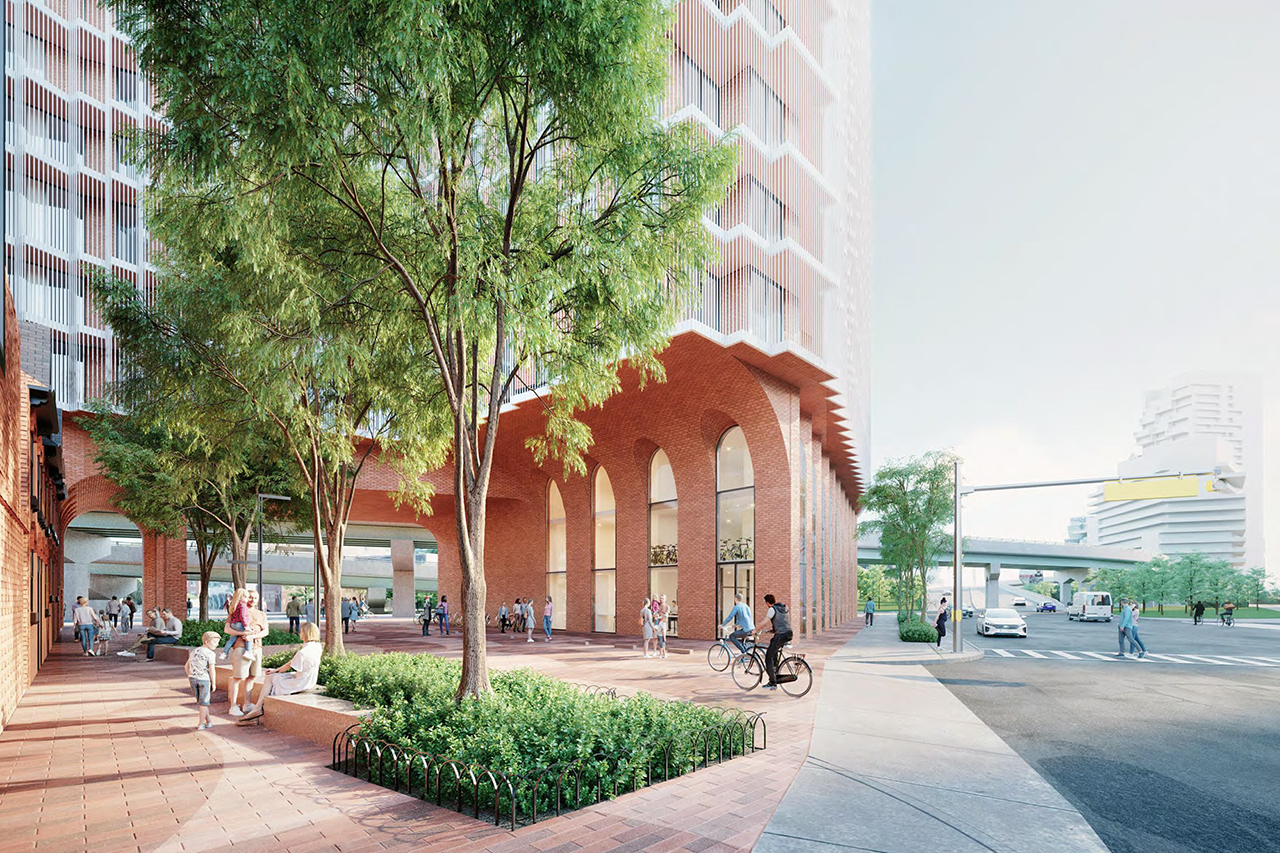
More than 30% of this rental tower will be dedicated to affordable housing. © City of Toronto
What’s also unique about the project is Markee’s business model of partnering with landowners interested in affordable housing and who have available land. One Sumach, for instance, is situated on a triangular plot of land surrounded by freeway ramps, which makes it an almost useless piece of real estate without the kind of creative imagining gh3* has brought to the plan, and which takes advance of those constraints.
Markee’s model of avoiding land costs means they can invest in better architecture and more affordable housing units. And as owners, they can also keep rents from going up as market rates increase.
Toronto Mayor John Tory has set a goal to add 40,000 new affordable rental homes and 4,000 new affordable ownership homes by 2030. With projects like these, there is no reason why design excellence can’t be part of that vision, too.
Written by Catherine Osborne